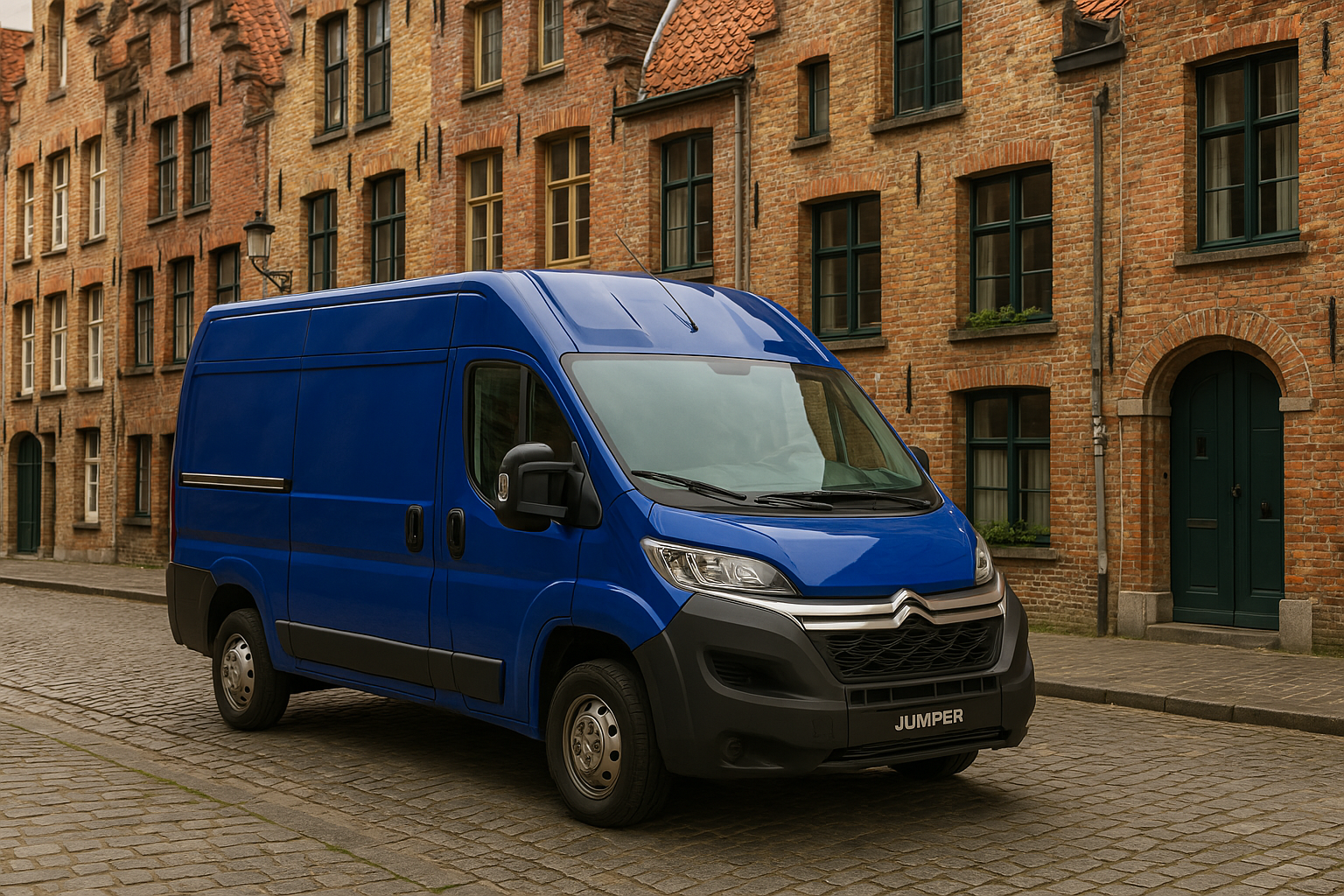Citroën Jumper: A Versatile Workhorse in Commercial Transportation
The Citroën Jumper, introduced in 1994, is a light commercial vehicle developed through a collaboration between PSA Group (now part of Stellantis) and Fiat. This joint venture led to the creation of similar models across different brands, including the Peugeot Boxer and Fiat Ducato. The Jumper has been produced in various configurations to cater to a wide range of professional needs, offering flexibility in cargo space, payload, and customization options. Over the years, it has undergone several updates to improve performance, safety, and comfort, solidifying its position in the commercial vehicle market.
Design and Dimensions
The Citroën Jumper is available in multiple lengths and heights, providing a cargo volume ranging from 8 to 17 cubic meters. The vehicle's design emphasizes functionality, with features like wide-opening rear doors and low loading sills to facilitate easy access to the cargo area. The interior is designed with the driver in mind, offering ergonomic seating and a dashboard layout that ensures controls are within easy reach. These design elements contribute to the Jumper's reputation as a practical and user-friendly commercial vehicle.
Engine and Performance
The Jumper has been equipped with a variety of diesel engines over its production run, catering to different performance and efficiency requirements. Recent models feature the 2.2-liter BlueHDi engines, delivering power outputs ranging from 120 to 180 horsepower, depending on the specific configuration. These engines are designed to meet stringent emission standards while providing the necessary torque for heavy-duty applications. The vehicle's front-wheel-drive layout contributes to a lower curb weight and improved fuel efficiency, making it a cost-effective choice for businesses.
Safety and Technology
Safety has been a focus in the development of the Citroën Jumper. Modern iterations come equipped with features such as Electronic Stability Control (ESC), Hill Start Assist, and a driver's airbag as standard. Optional safety technologies include lane departure warning systems and rearview cameras, enhancing driver awareness and reducing the risk of accidents. In terms of technology, the Jumper offers connectivity options like Bluetooth and USB ports, allowing drivers to stay connected while on the move.
Versatility and Customization
One of the key strengths of the Citroën Jumper is its versatility. It is available in various body styles, including panel vans, chassis cabs, and minibuses, allowing it to serve a multitude of commercial purposes. The vehicle can be customized with different interior fittings, shelving systems, and other modifications to suit specific industry requirements. This adaptability makes the Jumper a popular choice among tradespeople, delivery services, and fleet operators. Citroën also offers specialized versions for refrigerated transport, mobility assistance, and mobile workshops.
Global Presence and Production
The Citroën Jumper is manufactured at the Sevel Sud facility in Atessa, Italy, a plant known for producing light commercial vehicles for multiple brands under the Stellantis umbrella. The vehicle is sold in various markets worldwide, often under different names, such as the Citroën Relay in the United Kingdom. Its global presence underscores its reliability and the trust businesses place in its capabilities. The Jumper's widespread availability ensures that parts and service support are accessible in numerous regions.
Environmental Considerations
In response to growing environmental concerns, Citroën has introduced electric versions of its commercial vehicles, including the ë-Jumper. This electric variant offers zero-emission driving, making it suitable for urban deliveries and operations in low-emission zones. The ë-Jumper maintains the practicality of its diesel counterparts, with comparable cargo space and payload capacities. By expanding its electric vehicle lineup, Citroën demonstrates its commitment to sustainable transportation solutions.
Interior Comfort and Driver Experience
Though primarily a commercial vehicle, the Citroën Jumper does not neglect driver and passenger comfort. The cabin is spacious, with ample headroom and adjustable seats designed to reduce fatigue during long drives. Many models come equipped with air conditioning, cruise control, and a touchscreen infotainment system that supports navigation and multimedia functions. Storage compartments are plentiful, offering practical solutions for storing tools, documents, and personal belongings. This attention to comfort helps improve productivity and job satisfaction among professional drivers.
Maintenance and Operational Efficiency
The Jumper has been engineered for durability and long-term performance, with extended service intervals and reduced maintenance costs. Parts availability is widespread, and the vehicle's mechanical simplicity contributes to ease of repair and low downtime. Citroën provides comprehensive warranty options and fleet management solutions, which are especially beneficial for large-scale commercial operations. For businesses, these attributes translate into better total cost of ownership and higher uptime, making the Jumper an economically sound investment.

